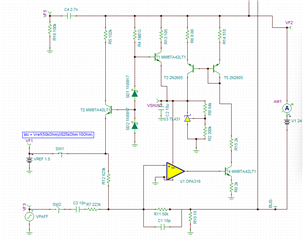Other Parts Discussed in Thread: DAC8742HEVM
Has any FF physical layer conformance testing been performed on this preliminary circuit?
I have been simulating some conditions with the DAC8740H PAFF Discrete Loop Powered Transmitter Simplified TINA simulation as a starting point from another forum thread, but I am not obtaining the amplitudes or slew rates I would expect to pass these compliance tests.




